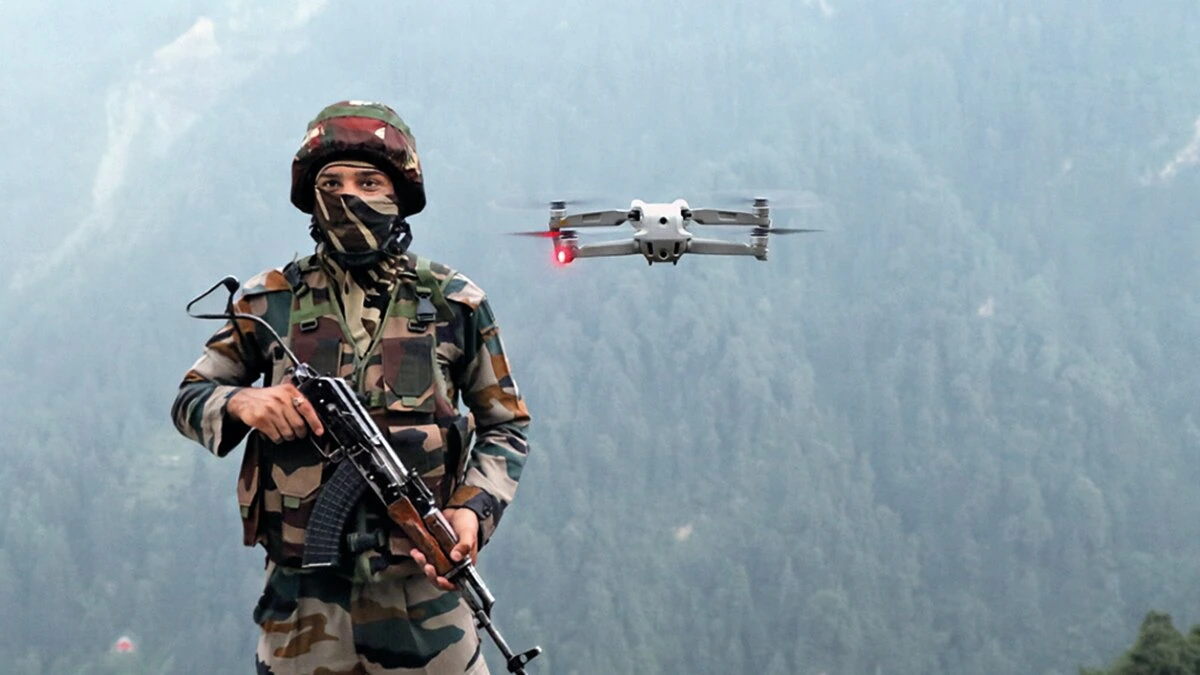Former Major General M Indrabalan, who is currently a military technology advisor, brought attention to serious flaws in India’s drone capabilities during a recent defense symposium. These flaws were discovered during Operation Sindoor, the nation’s first substantial drone warfare experience.
Being the first extensive use of drone warfare in Indian military history, Operation Sindoor was a turning point that drastically changed the nation’s strategy for dealing with asymmetric threats and targeted strikes.
The operation was carefully planned to destroy terrorist infrastructure in Pakistan and Pakistan-occupied Kashmir while also dealing a strategic blow to Pakistan’s military capabilities. It was initiated in early May 2025 in direct response to the terror attack in Pahalgam, which killed 26 civilians.
The Indian Air Force’s use of loitering weapons, sometimes known as kamikaze or suicide drones, was a defining characteristic of Operation Sindoor. Key Pakistani airbases at Noor Khan and Rahimyar Khan were neutralized thanks in large part to these drones, which could hover over target regions and engage enemy radar and missile installations with extreme precision.
The drones, which could be controlled remotely or operated independently, offered real-time strike and observation capabilities that improved the precision and potency of India’s larger missile attacks. The operational versatility and impact of these unmanned systems were demonstrated in one noteworthy case when a HARPY Kamikaze drone destroyed a Chinese-made LY-80 air defense system in Lahore.
Additionally, the project provided India’s emerging drone start-up ecosystem with a practical testing ground. Since many of the drones used were created by Indian start-ups and had not yet been officially incorporated into the military, it was possible to quickly improve domestic systems and conduct useful battlefield evaluation. This demonstrated the expanding impact of government programs such as the Drone Shakti Mission 2022 and the Drone Rules 2021, which have sped up innovation in the domestic drone industry and promoted public-private partnerships.
Operation Sindoor revealed significant flaws in India’s drone technology stack in spite of these developments. Military specialists claim that even though the drones were put together in India, key components like telemetry modules, navigation, and autopilots remained mostly depended on foreign technology. This demonstrated the pressing need for more technological independence, particularly in contrast to world powers such as China.
According to Indrabalan, most of the drones used in the operation were built in India, although they mostly depended on foreign core systems, especially for their control and electronic parts. He emphasized that although domestic businesses are making strides, the “deep technology”—which includes telemetry, navigation, and autopilot systems—remains primarily non-indigenous.
During Operation Sindoor, the Indian Air Force targeted high-value targets at Pakistani airbases with hovering munitions, or Kamikaze drones. These drones revealed significant weaknesses in India’s drone technology stack since they could hover and carry out precise strikes.
According to Indrabalan, the drone’s autopilot, navigation, and telemetry systems—the “brain” of the device—are still imported, even though airframes and propellers may be made domestically. He underlined that India has a long way to go before achieving technological parity and that it trails far behind world leaders like China in these areas.
The risk resulting from dependence on foreign navigation and transmission systems was one of the main issues brought up. Due to their reliance on GPS (American) or BeiDou (Chinese) satellite navigation, the majority of Indian drones are vulnerable to hacking, jamming, and spoofing.
Although India’s own NavIC navigation system is being partially integrated, it is not yet complete or reliable enough for the widespread use of drones.
Indrabalan also noted that the majority of drone telemetry and transmission modules, which are essential for safe communications, are imported, with the most popular and affordable models coming from China.
Due to the possibility of data being intercepted or routed elsewhere, this reliance presents security problems. He cautioned that a sustained reliance on foreign technology could compromise operational security and efficacy and called for immediate efforts to indigenize these crucial components.
Operation Sindoor demonstrated the increasing strategic significance of drones in contemporary warfare while also emphasizing the need for India to expedite its defense industry’s push for technical self-reliance, particularly in the areas of electronics, navigation, and secure communications.
Indian drones would continue to be vulnerable to outside threats in upcoming conflicts if these gaps are not filled.

